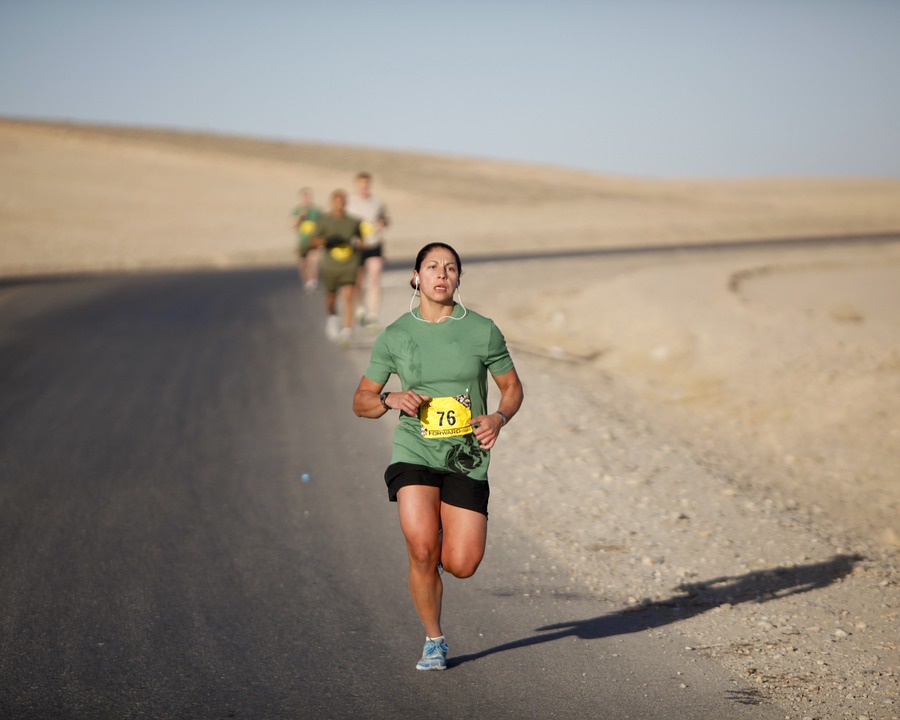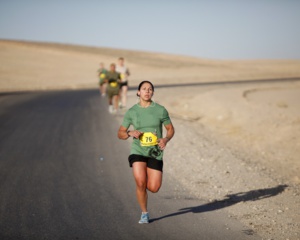Simon Wheatcroft is a blind athlete who collaborated with IBM to develop an app for smart-phones, eAscot, which helped him to complete his “ultra-marathons” all over the world without any assistance.
As per Matthew Stock’s report, ultra marathon is a “daunting” challenge for most athletes as it requires one to cross a desert under the scorching sun, while for a blind person the same becomes “practically impossible”. However, Simon Wheatcroft has proven it otherwise, as he took part in “a 150-mile ultra marathon” that took place in Namibian Desert, in the month of May.
At the age of seventeen Wheatcroft lost his sights, and began running with a partner. On the other hand, for the Namibian desert marathon Simon chose to partner with IBM instead of a running partner, whereby he stated:
"To run in the right direction all you need is a bearing, so it may be 40 degrees north that you need to run for a certain amount of time. So we created an app that would notify me if I deviated from the desired bearing."
The app thus developed has been named 'eAscot' as it guided Simon like a guide dog, while, Tim Daniel Jacobi, a software engineer at IBM, added:
"The major challenge was, we're trying to build something that is a mix between a GPS tracker and something that helps you park in your car. So we kind of needed to come up with the math to detect how far you are off the track and to think about how often we need to do that and how quickly does the app need to respond."
If Simon veers off his course beeps like that in the “parking sensor” notifies him of the same. Moreover, the beep changes its pitch according to left or right deviation from the course. During the course of a desert running, there are very less chances of one bumping into a “fellow runner”. Nevertheless, IBM and Simon are now into developing a system that would help the latter run unassisted even in the city. In Simon’s words:
"The key improvement is to definitely take it to the city marathon. So the app for the desert used GPS as the navigation system. So now can we create a system which can identify the objects and then translate that information to me. That's what we're working on now, some kind of sensor detection system that uses haptic to vibrate different parts of my body."
While, Stock reports:
“He (Simon) managed about 100 miles of this years Namibian race, before injury forced him to retire. He's now firmly set his sights on returning next year, with the new improved eAscot guiding the way”.
References:
http://www.reuters.com/
As per Matthew Stock’s report, ultra marathon is a “daunting” challenge for most athletes as it requires one to cross a desert under the scorching sun, while for a blind person the same becomes “practically impossible”. However, Simon Wheatcroft has proven it otherwise, as he took part in “a 150-mile ultra marathon” that took place in Namibian Desert, in the month of May.
At the age of seventeen Wheatcroft lost his sights, and began running with a partner. On the other hand, for the Namibian desert marathon Simon chose to partner with IBM instead of a running partner, whereby he stated:
"To run in the right direction all you need is a bearing, so it may be 40 degrees north that you need to run for a certain amount of time. So we created an app that would notify me if I deviated from the desired bearing."
The app thus developed has been named 'eAscot' as it guided Simon like a guide dog, while, Tim Daniel Jacobi, a software engineer at IBM, added:
"The major challenge was, we're trying to build something that is a mix between a GPS tracker and something that helps you park in your car. So we kind of needed to come up with the math to detect how far you are off the track and to think about how often we need to do that and how quickly does the app need to respond."
If Simon veers off his course beeps like that in the “parking sensor” notifies him of the same. Moreover, the beep changes its pitch according to left or right deviation from the course. During the course of a desert running, there are very less chances of one bumping into a “fellow runner”. Nevertheless, IBM and Simon are now into developing a system that would help the latter run unassisted even in the city. In Simon’s words:
"The key improvement is to definitely take it to the city marathon. So the app for the desert used GPS as the navigation system. So now can we create a system which can identify the objects and then translate that information to me. That's what we're working on now, some kind of sensor detection system that uses haptic to vibrate different parts of my body."
While, Stock reports:
“He (Simon) managed about 100 miles of this years Namibian race, before injury forced him to retire. He's now firmly set his sights on returning next year, with the new improved eAscot guiding the way”.
References:
http://www.reuters.com/






